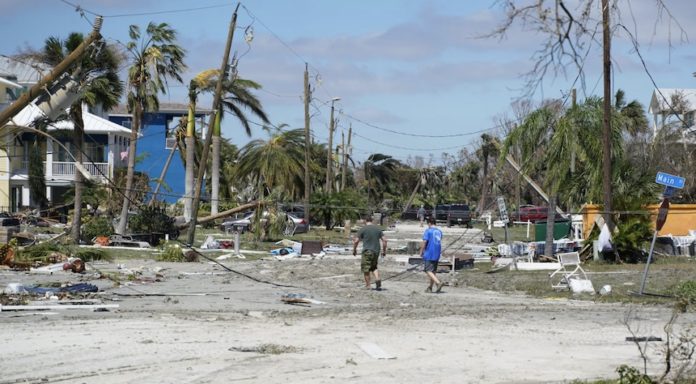As of Thursday morning, nearly two dozen people were rescued by the U.S. Coast Guard in Florida following Hurricane Ian’s devastation. More rescues are expected throughout the day.
At almost the same strength as a Category 5 storm, Hurricane Ian made landfall on Wednesday along the state’s Gulf Coast. According to Philip Klotzbach, a Colorado State University meteorologist, the system had winds of more than 150 miles an hour and was the fourth-strongest hurricane ever to hit the Sunshine State.
In an interview with Fox News, Peter Gautier, Coast Guard Deputy Commandant, stated that 23 people have been rescued by Coast Guard personnel.
Gautier stated that “the top priority…is saving lives.” “The Coast Guard moved all of its aircraft and cutters out of the affected area in the days before the storm hit to make it easier for us to get those boats back in. This is happening as we speak.
He said, “We expect that that will grow as the day passes,” noting that the Coast Guard mainly relies upon helicopters, while local law enforcement officers use small boats.
Many areas of Florida, including Hardee County and DeSoto County, where the storm passed, are currently experiencing power outage rates exceeding 100%. On Thursday morning, more than 2.5 million households and businesses were without power as utility companies began to repair the state’s grid. The majority of outages are in central Florida. There are a few outages in western Florida.
Officials trying to coordinate rescue efforts in western Florida were challenged by storm surges up to 18 feet in some areas. You start with your eyeball. Gautier described the rescue process as a quick search from the sky. We need to cross-reference streets that aren’t easily recognizable after communities flood.
Gautier, who assisted in Hurricane Katrina’s response, described Hurricane Ian as “up there” in terms of its severity. He said that the combination of huge storm surges from wind-driven waves, water from the ocean, and up to the rivers is something we haven’t seen before.
On Thursday morning winds were at 65 miles an hour. This made Hurricane Ian a tropical hurricane. The National Hurricane Center forecasts that the storm will remain stronger than initially thought, and could threaten South Carolina and Georgia.
The agency stated that Ian had “stingily gone east of track forecast for the last couple of days, and has moved back above water faster than expected,” “A mid-level shortwave rough moving southward through the southern United States should make Ian move northward overnight, and north-northwestward Saturday,” the agency stated.
Governor Ron DeSantis (R, FL) stated that he asked for complete disaster reimbursement from the federal government to ensure Florida can “quickly proceed into response and recovery.”




